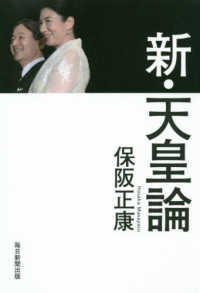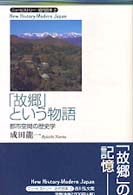Full Description
The essays in this volume engage explicitly in a variety of theoretical and methodological strategies for the interpretation of dress, dressed bodies, and their representations in the ancient world. Authors draw from a wide range of disciplinary frameworks, integrating literary and archaeological evidence, experimental archaeology, social theory and the study of iconography.
This volume spans a broad area both geographically and chronologically, bringing the ancient Near East into dialogue with the classical world from prehistory through late antiquity. The breadth and inclusivity of this volume provide a strong theoretical and methodological foundation for the collaborative study of the dynamic role of dressed bodies and images that depict them.
Contents
Acknowledgements
Introduction-Megan Cifarelli and Laura Gawlinski
List of Contributors
Section One: Getting Dressed
Gods Among Men: Fashioning the Divine Image in Assyria-Kiersten Neumann,
Early Iron Age Adornment within Southern Levantine Mortuary Contexts: An Argument for Existential Significance in Understanding Material Culture-Josephine A. Verduci
Section Two: Being Dressed
Color-Coded: The Relationship between Color, Iconography, and Theory in Hellenistic and Roman Gemstones-Eric Beckman
Fascinating Fascina: Apotropaic Magic and How to Wear a Penis-Alissa M. Whitmore
Surface Tensions on Etruscan and Greek Jewelry-Alexis Q. Castor,
Costly Choices: Signaling Theory and Dress in Period IVb Hasanlu, Iran-Megan Cifarelli
Section Three: Dress and Identity
Neolithic Blue Beads in Northwest Turkey: The Social Significance of Skeuomorphism-
Ayse Bursali, Rana Özbal, Emma Baysal, Hadi Özbal, Baris Yagci
Fabrics of Inclusion: Deep Wearing and the Potentials of Materiality on the Apadana Reliefs-Neville McFerrin
Theorizing Religious Dress-Laura Gawlinski
The Costumes and Attributes of Late Antique Honorific Monuments: Conformity and Divergence within the Public and Political Sphere-Elizabeth Wueste
Western Men, Eastern Women? Dress and Cultural Identity in Roman Palmyra-Maura K. Heyn







